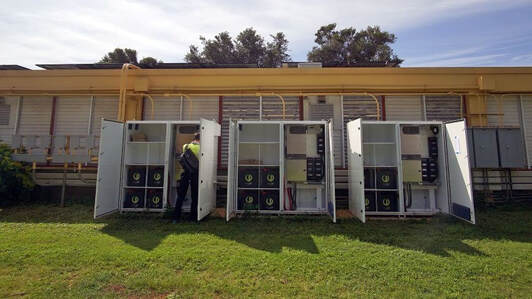|
How Not to Cool the Schools
Imagine Hawaii’s keiki sitting in hot classrooms. That has been an issue for our public schools for many years, with then-Governor Ige signing several bills, such as Act 47 of 2016 that appropriated $100 million toward heat abatement upgrades, and Act 260 of 2022 that appropriated another $10 million. At the time, people in the communities involved were ready and willing to donate air conditioners for the classrooms. Some did, and to their dismay, found out that the existing circuits in the school simply didn’t have the capacity to handle the unit. The Department of Education (DOE) found “circuits are blown for a couple of classrooms or even whole wings of campuses. With that comes a potential fire hazard.” Following that revelation, facilities geniuses at our DOE came up with the idea of using solar powered air conditioners. They managed to install them in 880 classrooms and spent $122 million in the process, according to reporting from Hawaii News Now. This translated into a cost of more than $138,000 per classroom. Regular air conditioners could be bought for $2,000 per classroom, according to former HSTA president and Campbell High School teacher Corey Rosenlee. Then came the real kicker: The solar-powered air conditioners conked out midway through the school day. They were designed to operate for less than five hours per day. “We got schooled on that, right, because classrooms operate more than four and a half hours,” Randall Tanaka, assistant superintendent for the DOE’s Office of Facilities and Operations, is quoted as saying. At that point, the real geniuses in the world stepped up to resolve the issue. They noted that many of the lights in the classrooms used incandescent lights and other inefficient (by today’s standards) fixtures. They retrofitted many of the schools with LED lights and other energy-efficient lighting. As an example, a common light bulb on the market today, an LED bulb designed to replace a 100-watt incandescent, only uses 15 watts of power. After the lights were replaced, lo and behold, the energy consumption of the lights plummeted. The schools then found that they could disconnect their pricey solar air conditioners from the solar power circuits and simply plug them in to the regular power circuits without blowing them out because the lighting retrofit freed up capacity in the system. Problem solved! Except that $136,000 per classroom, perhaps $120 million in total, was basically wasted. Obviously, the DOE has a different take on the matter. Now, they are touting a “new process designed to more quickly deploy air conditioning units in buildings that can accommodate the increased energy use.” It’s simply up to the school to get an electrical assessment from the facilities folks, which will use up no additional money, and then the school will “have a range of options to move forward, including starting to budget for the project, partnering with community groups for equipment donations, engaging area lawmakers, or seeking funds through the Department’s legislative budget request.” But can we get a refund on that $120 million they overspent? For a goof this big, a simple “Oops” isn’t nearly enough.
0 Comments
Your comment will be posted after it is approved.
Leave a Reply. |
If you wish to further discuss blog posts, please contat our office directly or contact us via Contact page.
Categories
All
|


 RSS Feed
RSS Feed